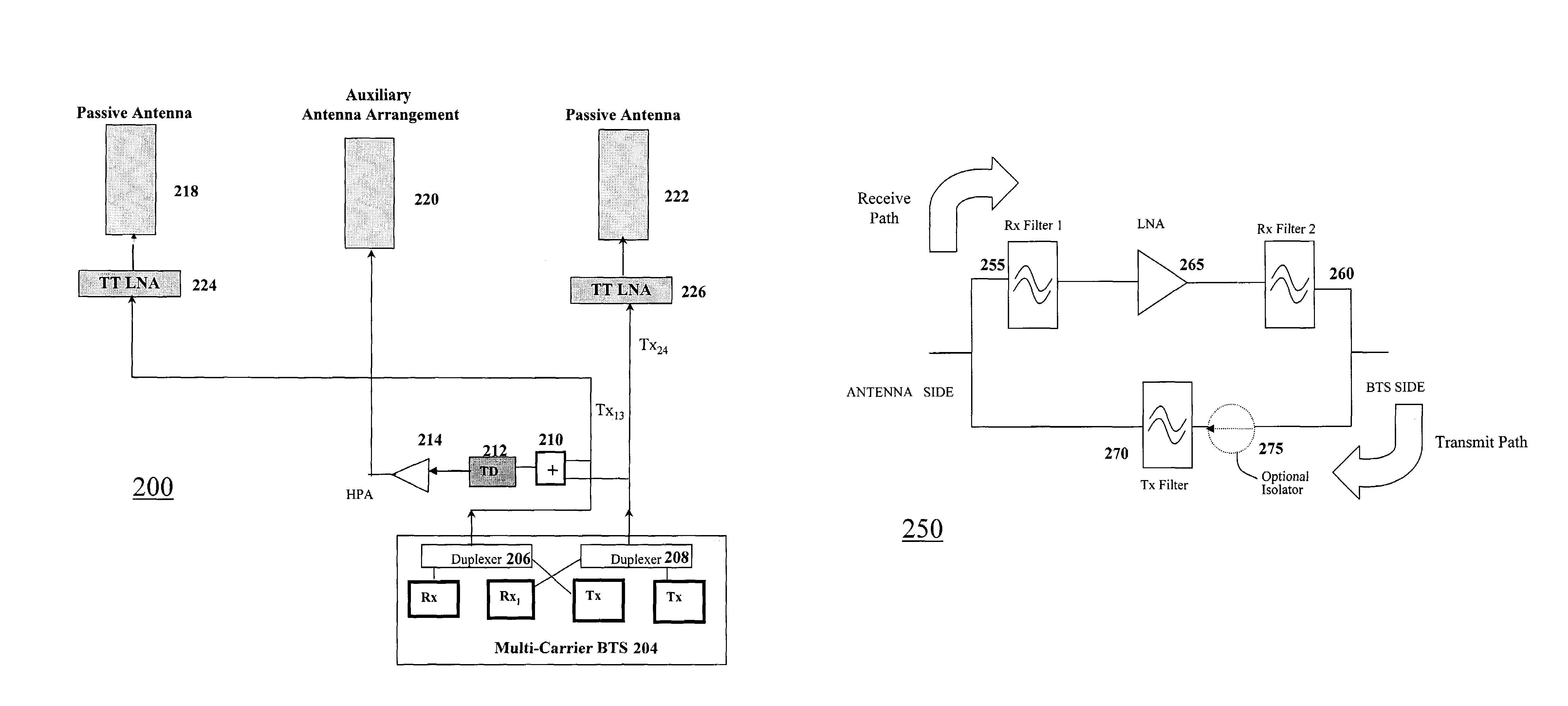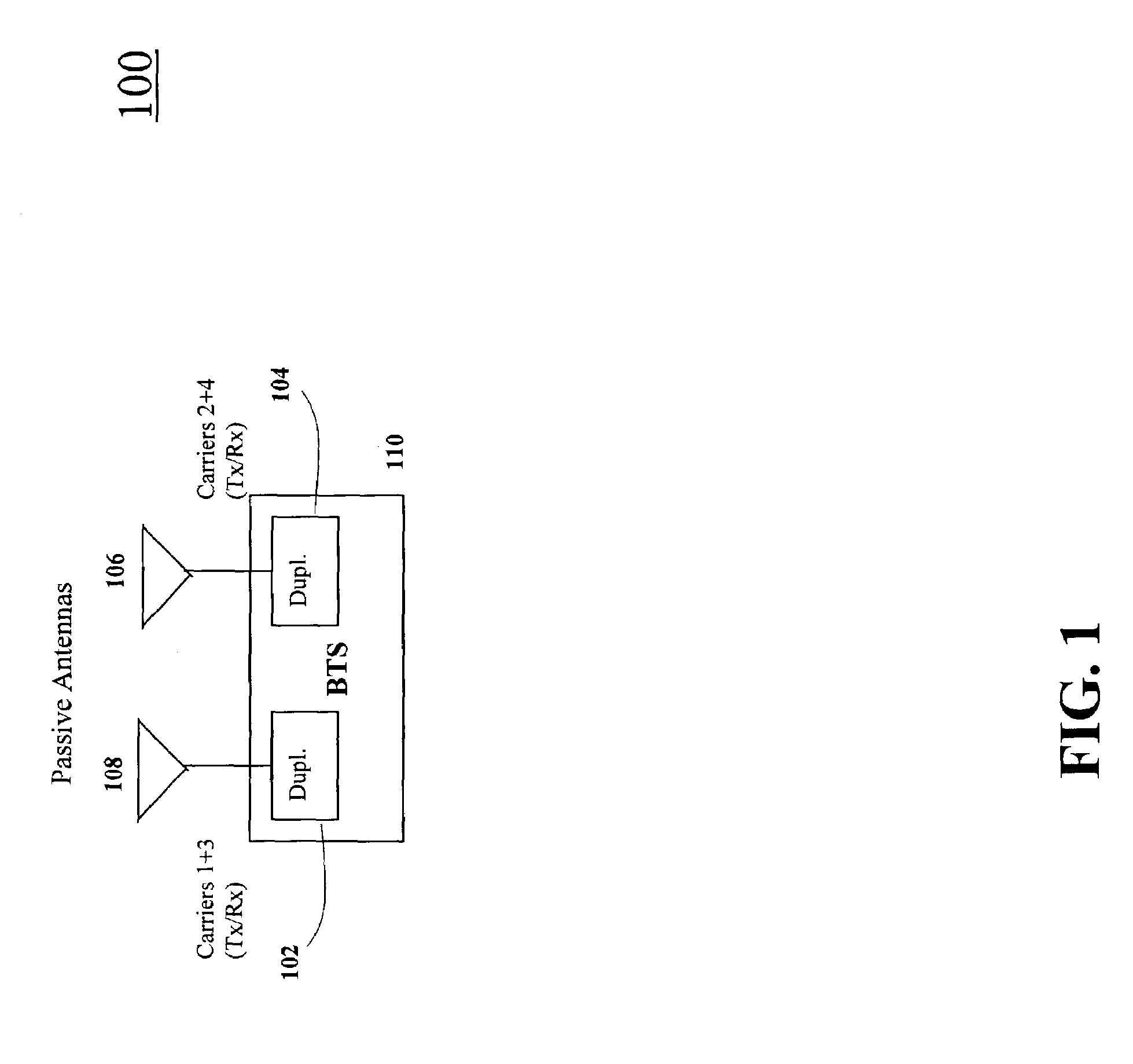Time-delay transmit diversity add-on to a multicarrier base transceiver system
a transceiver system and multi-carrier technology, applied in the field of cell communication, can solve the problems of limited number of users that may be supported by each bts, cell overloaded, interference-limited cdma systems, etc., to reduce the effect of multipath fading, enhance reverse link sensitivity, and reduce noise figur
- Summary
- Abstract
- Description
- Claims
- Application Information
AI Technical Summary
Benefits of technology
Problems solved by technology
Method used
Image
Examples
Embodiment Construction
[0019]FIG. 1 is a schematic diagram of a portion of a multicarrier base station system 100. BSs 100 equipped with BTSs 110 capable of multicarrier operations may utilize two passive antennas 106 and 108 to perform multicarrier transmissions as well as achieve reverse link or receive diversity. BS 100 may arrange passive antennas 106 and 108 to achieve receive (Rx) space diversity reception.
[0020]BTS 110 generates two or more carriers, which are then simultaneously transmitted from BS 100. The generated carriers are e.g., combined in two groups of non-adjacent carriers in accordance with a minimum-loss combining scheme. The groups of non-adjacent carriers are illustrated in FIG. 1 as Carriers 1+3 and Carriers 2+4. Each of the non-adjacent groups is forwarded via duplexers, 102 and 104, which enables simultaneous transmission and reception through each of the two passive antennas.
[0021]BS 100 lacks forward link or transmit delay diversity and, thus, does little to reduce fading effect...
PUM
 Login to View More
Login to View More Abstract
Description
Claims
Application Information
 Login to View More
Login to View More - R&D
- Intellectual Property
- Life Sciences
- Materials
- Tech Scout
- Unparalleled Data Quality
- Higher Quality Content
- 60% Fewer Hallucinations
Browse by: Latest US Patents, China's latest patents, Technical Efficacy Thesaurus, Application Domain, Technology Topic, Popular Technical Reports.
© 2025 PatSnap. All rights reserved.Legal|Privacy policy|Modern Slavery Act Transparency Statement|Sitemap|About US| Contact US: help@patsnap.com



